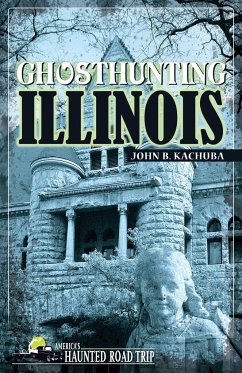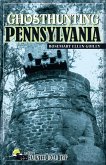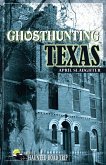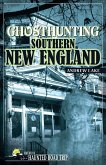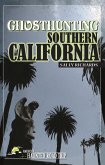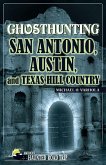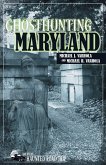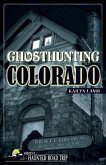EXCERPTS Biograph Theater Chicago John Dillinger Lives - Not the flesh-and-blood gangster, of course, but his ghost, who has been seen outside the place where Dillinger drew his last breaththe Biograph Theater on North Lincoln Avenue. By the time Dillinger was gunned down by FBI agents on July 22, 1934, he had become Public Enemy No. 1, his notorious exploits ballyhooed in newspapers across the country on an almost daily basis. While much of the American public viewed Dillinger as something of a modern-day Robin Hood, FBI director J. Edgar Hoover had issued a shoot to kill order on the gangster as well as a $10,000 reward. Each of the five states in which Dillinger and his gang had robbed banks also offered $10,000 rewards. Born in Indianapolis in 1903, John Dillinger was not known as a troublesome youth. Rather, he was quiet, a good student, and a talented baseball player. But in 1923 he was refused permission to marry his sweetheart by the girl s stepfather and, in a rage, he stole a car, abandoning it only a few hours later. Afraid that he might be arrested for the theft, Dillinger enlisted in the U.S. Navy. The Navy wasn t to his liking, however, and he went AWOL several times, finally jumping ship for good in Boston. Listed as a deserter by the Navy, Dillinger made his way back home to Indiana. It wasn t long before he fell in with men who would set him on a life of crime. In 1924 Dillinger was involved in a robbery in which the victim was accidentally shot. He was convicted and sent to the Indiana State Reformatory. Just as he did in the Navy, Dillinger tried to escape several times, but was always caught. Dillinger became good friends with bank robbers Harry Pierpont and Homer Van Meter, both of whom were shortly after transferred to the state prison in Michigan City. Dillinger himself was later transferred to Michigan City, where he renewed his friendship with the two men. They also introduced him to other inmates who served as worthy professors in his criminal education. A plan was hatched in which Dillinger, who was slated for release before the other men, would rob banks in order to raise money to finance a prison break of the others. Dillinger s notorious bank robbing career was launched. In July 1933, Dillinger and Harry Copeland walked into the Commercial Bank in Danville, Indiana, pointed guns at the tellers and customers and politely announced that they were robbing the bank. Dillinger, wearing a straw boater, which would become his trademark, was cool and collected. The men made off with $3,500. From that point on Dillinger engaged in a string of bank robberies throughout the Midwest, raising money to break his friends out of prison. When he had enough money, he bought guns and had them smuggled into the Michigan City prison. While Dillinger s friends in prison were planning their break, he was arrested in Dayton, Ohio, where he had been visiting a girlfriend. He was incarcerated in the Lima, Ohio, jail when ten inmates of the Michigan City prison, using the guns Dillinger had sent them, drove right through the prison s front gates in cars stolen from inside the prison. Some of them discovered Dillinger s whereabouts, broke into the jail, shot the sheriff dead, and freed their friend. Dillinger and his friends shifted their operations to Chicago, living in a few apartments on the North Side. At one point they raided a police arsenal in Peru, Indiana, and made off with an assortment of weapons, including machine guns, shotguns, and bulletproof vests. Dillinger and his friends robbed banks in Greencastle, Indiana, and Milwaukee before taking a break in Florida and then Arizona. But the law caught up with Dillinger in Tucson. He was arrested and sent back to Illinois to stand trail for the robbery of a bank in East Chicago. Ironically, it was a robbery that, in all likelihood, he did not commit, although he was accused of it. He was locked up in the escape-proof Crown Point, Indiana, prison from which he escaped a month later using a gun carved out of a bar of soap and colored black with shoe polish. Taking a few guards hostage, he stole a car from the prison and drove across the state line to Illinois, where he released the guards with his apologies and handed them four dollars for food and carfare. Although he was free again, Dillinger s transportation of kidnapped persons across state lines was a federal offense and now allowed the FBI to become involved in trying to bring him to justice. Dillinger moved to St. Paul, Minnesota, where he teamed up with old friend and new parolee Homer Van Meter and an angry, deranged killer named Lester Gillis, better known as Baby Face Nelson. They knocked over a bank in Sioux Falls, South Dakota, but encountered resistance, making off with only about $50,000 of the $200,000 the bank had in the vault. Dillinger and John Hamilton, another old robber friend who had rejoined Dillinger, were shot in the holdup, although their wounds were not severe and they both recovered. All this time, the FBI was hot on Dillinger s trail. Dillinger, Van Meter, and a woman named Billie Frechette narrowly avoided capture at the St. Paul apartment they were renting. The three escaped in a hail of gunfire, one slug tearing into Dillinger s leg. The trio escaped to an isolated fishing camp in the woods of Wisconsin called Little Bohemia. There Baby Face Nelson, Eddie Green, John Hamilton, Tommy Carroll, and several of the gang s girlfriends joined them. Melvin Purvis, director of the Chicago office of the FBI, received a tip that the Dillinger gang was holed up at Little Bohemia. He assembled a team of dozens of agents and planned an attack on the fishing lodge. He positioned his men for a raid on the lodge the night of April 22, 1934. That night the agents saw three men exit a cabin and get into a car. The agents called for them to stop, but the men apparently did not hear the order. The agents opened fire, blasting the car apart and killing Civilian Conservation Corps worker Eugene Boiseneau and wounding two fishermen. The real crooks heard the gunfire and disappeared into the dark woods. The agents poured gunfire into the cabins all night long, but in the morning all they found were some of the gang members girlfriends, who had managed to find refuge from the fire by hiding in the basement. Not one of the bank robbers was captured. Hoover and Purvis were embarrassed and incensed by the disaster. They vowed that such a fiasco would never happen again. In July 1934, Chicago police detective Martin Zarkovich approached Purvis and told him that he could deliver Dillinger. Zarkovich had a friend named Anna Sage, a whorehouse madam who was facing deportation to her native Romania, who he said could set up Dillinger if the FBI would halt her deportation proceedings. The deal was struck. The evening of July 22 was a warm one. John Dillinger wore a lightweight coat with a white shirt, gray pants, canvas shoes, and his usual straw boater as he entered the Biograph Theater with his most recent girlfriend, Polly Hamilton Keele. Anna Sage, who wore a brilliant orange dress, accompanied the couple. The banner hanging below the Biograph s illuminated marquee advertised that the theater was cooled by refrigeration so that its patrons could watch Manhattan Melodrama, starring Clark Gable, William Powell, and Myrna Loy, in comfort. While the movie played, Purvis positioned his men in the streets outside the theater. He was nervous, chain-smoking cigarettes as he waited for the theatergoers to exit. At about 10:30, the house lights came up and the theater began to empty. As the crowd filed out, Purvis saw Anna Sage s distinctive orange dressthe means by which they agreed to identify her, and thus, Dillingeramong the crowd. He signaled to his agents and the police to move in. Dillinger stepped off the curb, just before the alley that ran alongside the theater. Alerted by something, he suddenly stopped and whirled around, apparently reaching for a gun hidden beneath his coat. The agents opened fire. Three bullets struck him. Dillinger staggered a few steps then fell to the pavement dead. On the day I visited it, the Biograph Theater looked pretty much as it had that night in 1934. The same imposing marquee still projected out above the sidewalk as it had when Dillinger walked beneath it. The little box office where he had purchased his tickets was still there. But the interior of the Biograph would have been unrecognizable to Dillinger s ghost. At one time a single large room, it had since been dived into smaller theaters. The original seats, including the one that Dillinger had sat in and which had been painted a color different from all the others after his death, were long gone, replaced with newer ones. There were no moviegoers when I was there, but I did speak with the theater manager, as well as some employees, none of whom had ever experienced any ghostly happenings at the theater. Still, there are stories of people seeing a shadowy figure of a man running on the sidewalk, or heading for the alley. He runs, then staggers, then falls and disappears, almost as if reenacting the shooting over and over again. There are some who say the man killed at the Biograph Theater that night was not really John Dillinger, but that the FBI, embarrassed by the Little Bohemia debacle, could not admit yet another mistake and so covered up the truth. We may never know the truth, but what we do know is that a man was shot and killed that night and that his ghost relives that agony still. "
Hinweis: Dieser Artikel kann nur an eine deutsche Lieferadresse ausgeliefert werden.
Hinweis: Dieser Artikel kann nur an eine deutsche Lieferadresse ausgeliefert werden.

